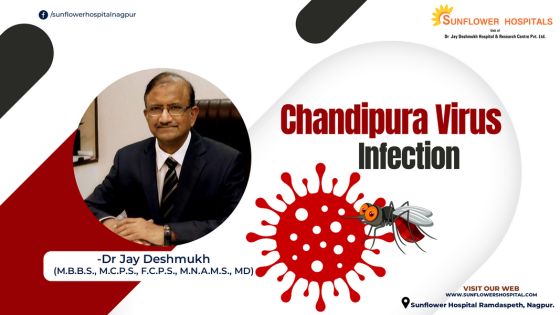What is the Chandipura virus?
This is an enveloped RNA virus and had global attention due to its ability to cause death in children within 24 hours of infection. In the 2003 outbreak, the fatality was about 75% in infected children. The disease was first known as a killer brain disease or a mystery disease. Sporadic cases are seen all over Central India, including Nagpur.
How do you get this viral infection?
It is transmitted by sand flies and probably mosquitoes. The virus resides in the salivary glands of these insects and can be transmitted to humans or domestic animals through bites. During early monsoon, the female phlebotomise sandfly is commonly seen and the bite of this sandfly could be dangerous if it carries the deadly virus that infects the brain and causes encephalitis, particularly in children. Animal reservoirs include cattle and rodents which can act as intermediate hosts.
What are the symptoms of Chandipura virus infection?
It presents with acute febrile illness. There would be a sudden onset of high-grade fever and headache. Encephalitis which is inflammation of the brain is the most severe manifestation. This presents with a conclusion state, vomiting, seizures, altered mental state, and coma. Rapid progression of symptoms is the most important aspect of Chandipura virus infection, with a high mortality rate in children. Other symptoms include an aversion to light and rarely hemorrhagic symptoms.
How is the diagnosis made?
The diagnosis is made by mere suspicion in children with fever and rapidly progressing encephalitis. Blood samples may be sent to National Virology institutes. The patients are usually below 15 years of age. The viral infection is commonly seen in rural areas.
How is this viral infection treated?
Immediate hospitalization, intravenous fluids, medications against fever, and anticonvulsants for seizure control should be the primary treatment. Intensive care is needed for children with severe neurological manifestations.
How to prevent Chandipura virus infection?
Reducing the sandfly population through insecticide spraying is important. Eliminating breeding sites for sandflies around homes and communities is important. Using insect repellents, protective clothing bed nets and window screens is useful.
What should be the public health measures?
Surveillance for early detection of outbreaks, public awareness campaigns to educate communities about sandfly bite prevention and early symptom recognition are important.
What about anti-viral drugs and vaccination?
Currently, no vaccines or drugs are available to prevent or cure the disease. Those who survive have a better immune status and a low virus load.


